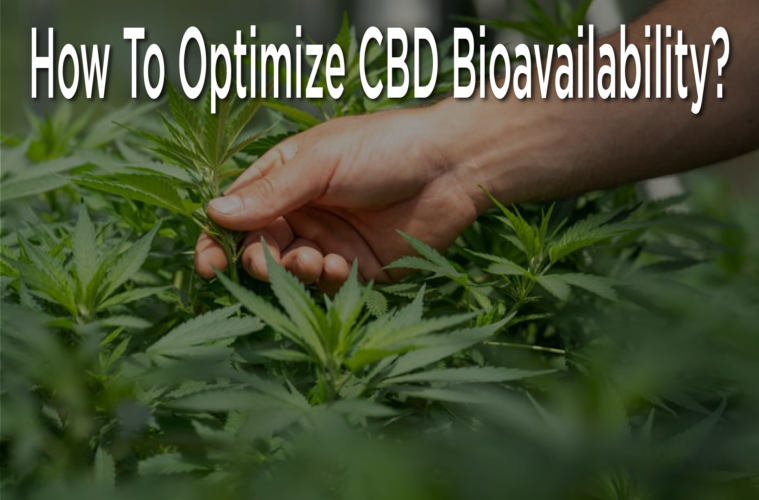View the original article about CBD Bioavailability at The Right CBD Products.
Although the market offers a wide range of options in CBD, letting us choose different ways of intake, the bioavailability of the methods has visible variations. The term bioavailability generally means the amount of CBD that reaches our bloodstream when we use a CBD product.
How Does CBD Get Absorbed In The Body?
Bioavailability can be studied only after understanding the mechanism of CBD absorption in the body. When you use a CBD product, it has to reach the bloodstream from the site of administration and upon reaching the bloodstream, it is transported throughout the cannabinoid, as well as non-cannabinoid receptors.
The path that a CBD product is applied or consumed, namely the route of administration directly influences the uptake, transport, and elimination of cannabidiol. How fast the effects will be felt, how much CBD will become active in the body, and how long the effects last, are all decided by the route of administration.
Transfer of CBD from the application site to the bloodstream is the core process of CBD absorption. The amount of product that has an active effect in the body is termed as bioavailability. It is expressed in percentage and indicates the amount of CBD that reaches the bloodstream.
What Is The Bioavailability Of Different Intake Methods?
CBD products come in different forms like ingestible, sublingual products, topicals, vape products, etc and each method has a characteristic bioavailability. Given below is the bioavailability of different CBD product types.
Ingestible CBD
There are a number of products like CBD gummies, drinks, soft gels, capsules, etc in the ingestible category. When you eat or swallow CBD, the product has to be digested first, meaning that CBD has to bypass the liver prior to being absorbed into the bloodstream. The amount of CBD that reaches the bloodstream reduces significantly offering a low bioavailability to the intake method. The bioavailability of ingestible CBD products falls in the range 13-19%.
Sublingual CBD Products
Sublingual CBD products are kept under the tongue for a minute before swallowing, enabling the direct entry of CBD into the bloodstream through the sublingual glands. As the CBD does not have to bypass the liver as in the case of ingestible CBD, the sublingual mode of consumption has greater bioavailability than ingestible CBD products. The bioavailability value of sublingual CBD is in the range of 20-30%.
Topical CBD Products
The ease of application and discreetness has made topical CBD products quite famous but when it comes to bioavailability, CBD topicals do not perform that well. The bioavailability of CBD topicals is lower than that of methods like ingesting CBD or taking it sublingually.
Vape CBD Products
The intake method of vaporizing CBD has high bioavailability with values that range from 10% to 60%. CBD kicks in quickly when you choose the method of vaping but adequate care has to be taken while you set the temperature to heat the vape product, as overheating can lead to the transformation of safe CBD vape juices into toxic benzenes. CBD shatter, CBD wax, etc are some of the vape CBD products that are commonly used.
What Are The Possible Ways Of Increasing Bioavailability Of CBD?
By raising the bioavailability of CBD, we can efficiently enhance the therapeutic benefits that the product offers. Here are some of the ways you can increase the bioavailability of CBD.
Choose A High Fat Meal
Cannabidiol has a fat-soluble nature meaning that it can be dissolved easily in fatty oils. No wonder why carrier oils are used to dissolve CBD in CBD oils. As the CBD is dissolved in fatty oils, it is broken down into smaller molecules that are far easier to absorb when compared with large molecules. Thus, if you are a fan of CBD edibles, you may mix them with high-fat meals to enhance the bioavailability of CBD.
Emulsification
Newer CBD brands have started adopting the technique of emulsifying CBD using nanotechnology that facilitates the breakdown of CBD into micron size molecules. Emulsification is possible in both water-based and oil-based products, with the bioavailability improving significantly, as CBD molecules become smaller and more dispersed. The ease with which the micronized particles pass through cell membranes is much higher than that of larger molecules.
Addition Of Supplemental Terpenes
Terpenes are fatty oils that occur naturally in the essential oils of almost all plant types, and in addition to enhancing the health benefits of essential oils, they give the characteristic aroma and flavor to many flowers, fruits as well as herbs.
Terpenes are present in hemp plants and are extracted along with the cannabinoids in the manufacture of full-spectrum CBD. Adding terpenes extracted from different plants increases the bioavailability of CBD by acting as lipids in which CBD dissolves easily.
Even if an intake method does not have high bioavailability, you might choose it because of its relative ease or discreteness. As there are multiple ways available to boost the bioavailability of an administering method, you may choose these methods, all the while sticking to the intake method that you find comfortable.
Learn more about How To Optimize CBD Bioavailability at The Right CBD Products.
Advertising disclosure: We may receive compensation for some of the links in our stories. Thank you for supporting Irvine Weekly and our advertisers.


